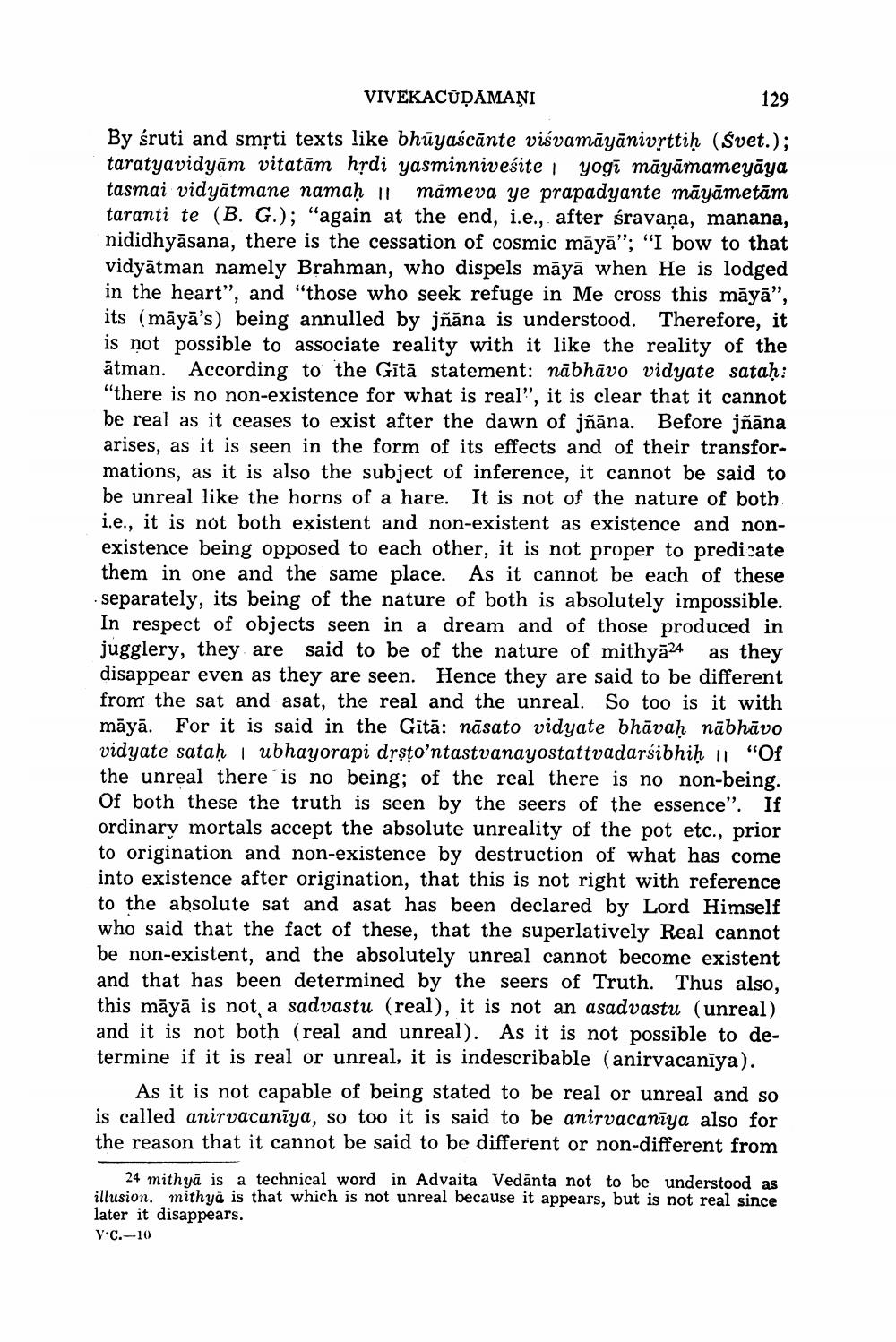________________
VIVEKACŪDAMANI
By śruti and smrti texts like bhūyaścante viśvamāyānivṛttiḥ (Svet.); taratyavidyam vitatām hṛdi yasminniveśite yogi māyāmameyāya tasmai vidyatmane namaḥ || mameva ye prapadyante māyāmetām taranti te (B. G.); "again at the end, i.e., after śravaņa, manana, nididhyasana, there is the cessation of cosmic māyā"; "I bow to that vidyatman namely Brahman, who dispels māyā when He is lodged in the heart", and "those who seek refuge in Me cross this māyā", its (māyā's) being annulled by jñāna is understood. Therefore, it is not possible to associate reality with it like the reality of the atman. According to the Gitā statement: nābhāvo vidyate sataḥ: "there is no non-existence for what is real", it is clear that it cannot be real as it ceases to exist after the dawn of jñāna. Before jñāna arises, as it is seen in the form of its effects and of their transformations, as it is also the subject of inference, it cannot be said to be unreal like the horns of a hare. It is not of the nature of both. i.e., it is not both existent and non-existent as existence and nonexistence being opposed to each other, it is not proper to predicate them in one and the same place. As it cannot be each of these separately, its being of the nature of both is absolutely impossible. In respect of objects seen in a dream and of those produced in jugglery, they are said to be of the nature of mithya24 as they disappear even as they are seen. Hence they are said to be different from the sat and asat, the real and the unreal. So too is it with māyā. For it is said in the Gitā: nāsato vidyate bhāvaḥ nābhāvo vidyate sataḥubhayorapi dṛṣṭo'ntastvanayostattvadarsibhiḥ || "Of the unreal there is no being; of the real there is no non-being. Of both these the truth is seen by the seers of the essence". If ordinary mortals accept the absolute unreality of the pot etc., prior to origination and non-existence by destruction of what has come into existence after origination, that this is not right with reference to the absolute sat and asat has been declared by Lord Himself who said that the fact of these, that the superlatively Real cannot be non-existent, and the absolutely unreal cannot become existent and that has been determined by the seers of Truth. Thus also, this māyā is not, a sadvastu (real), it is not an asadvastu (unreal) and it is not both (real and unreal). As it is not possible to determine if it is real or unreal, it is indescribable (anirvacaniya).
129
As it is not capable of being stated to be real or unreal and so is called anirvacaniya, so too it is said to be anirvacaniya also for the reason that it cannot be said to be different or non-different from
24 mithya is a technical word in Advaita Vedanta not to be understood as illusion. mithya is that which is not unreal because it appears, but is not real since later it disappears.
V.C.-10




